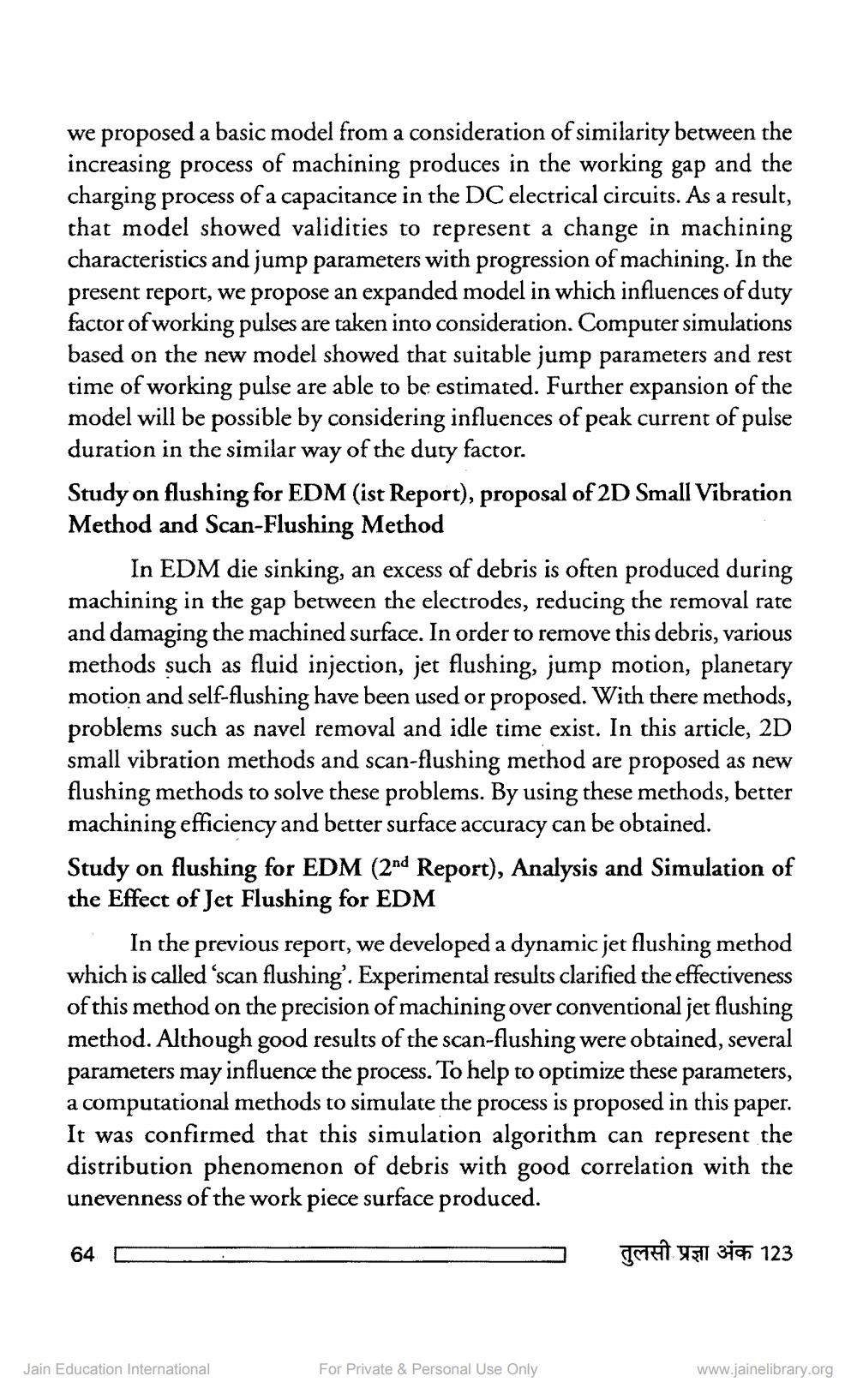________________
we proposed a basic model from a consideration of similarity between the increasing process of machining produces in the working gap and the charging process of a capacitance in the DC electrical circuits. As a result, that model showed validities to represent a change in machining characteristics and jump parameters with progression of machining. In the present report, we propose an expanded model in which influences of duty factor of working pulses are taken into consideration. Computer simulations based on the new model showed that suitable jump parameters and rest time of working pulse are able to be estimated. Further expansion of the model will be possible by considering influences of peak current of pulse duration in the similar way of the duty factor. Study on flushing for EDM (ist Report), proposal of 2D Small Vibration Method and Scan-Flushing Method
In EDM die sinking, an excess of debris is often produced during machining in the gap between the electrodes, reducing the removal rate and damaging the machined surface. In order to remove this debris, various methods such as fluid injection, jet flushing, jump motion, planetary motion and self-flushing have been used or proposed. With there methods, problems such as navel removal and idle time exist. In this article, 2D small vibration methods and scan-flushing method are proposed as new flushing methods to solve these problems. By using these methods, better machining efficiency and better surface accuracy can be obtained. Study on flushing for EDM (2nd Report), Analysis and Simulation of the Effect of Jet Flushing for EDM
In the previous report, we developed a dynamic jet flushing method which is called 'scan flushing'. Experimental results clarified the effectiveness of this method on the precision of machining over conventional jet flushing method. Although good results of the scan-flushing were obtained, several parameters may influence the process. To help to optimize these parameters, a computational methods to simulate the process is proposed in this paper. It was confirmed that this simulation algorithm can represent the distribution phenomenon of debris with good correlation with the unevenness of the work piece surface produced. 64 [
THAT 4511 31 123
Jain Education International
For Private & Personal Use Only
www.jainelibrary.org




